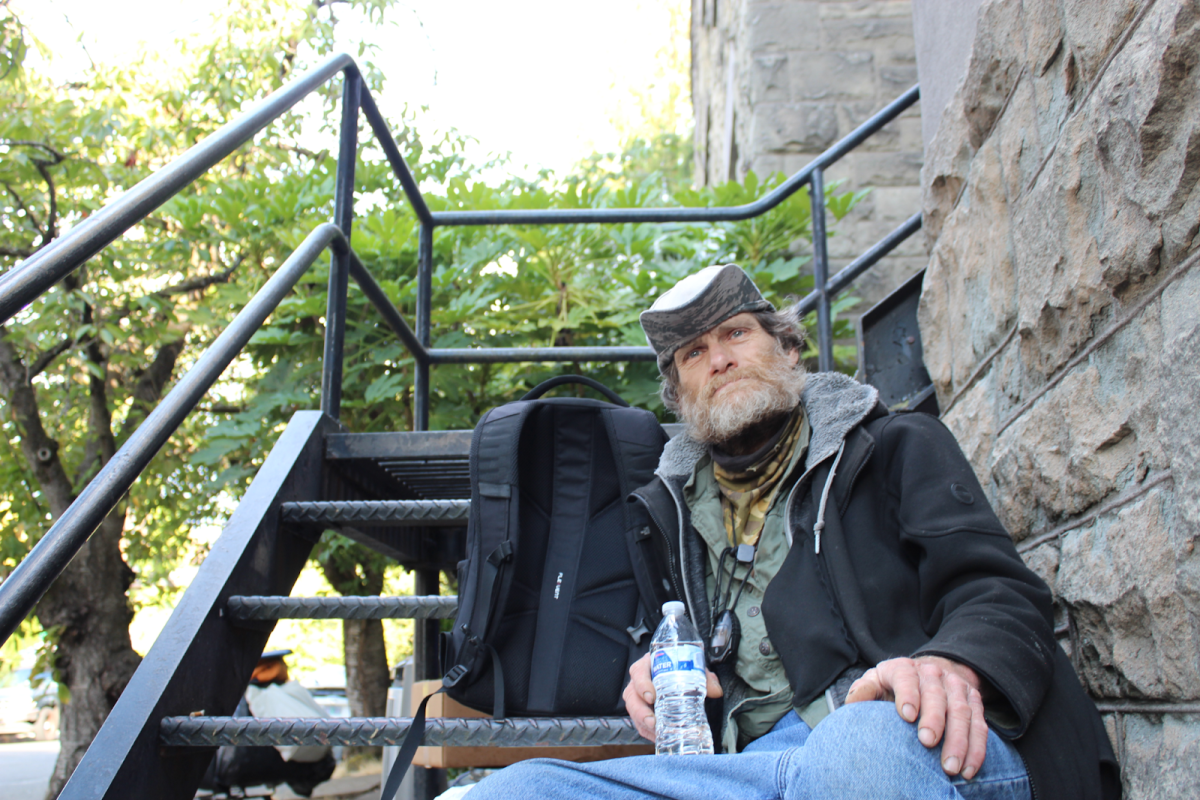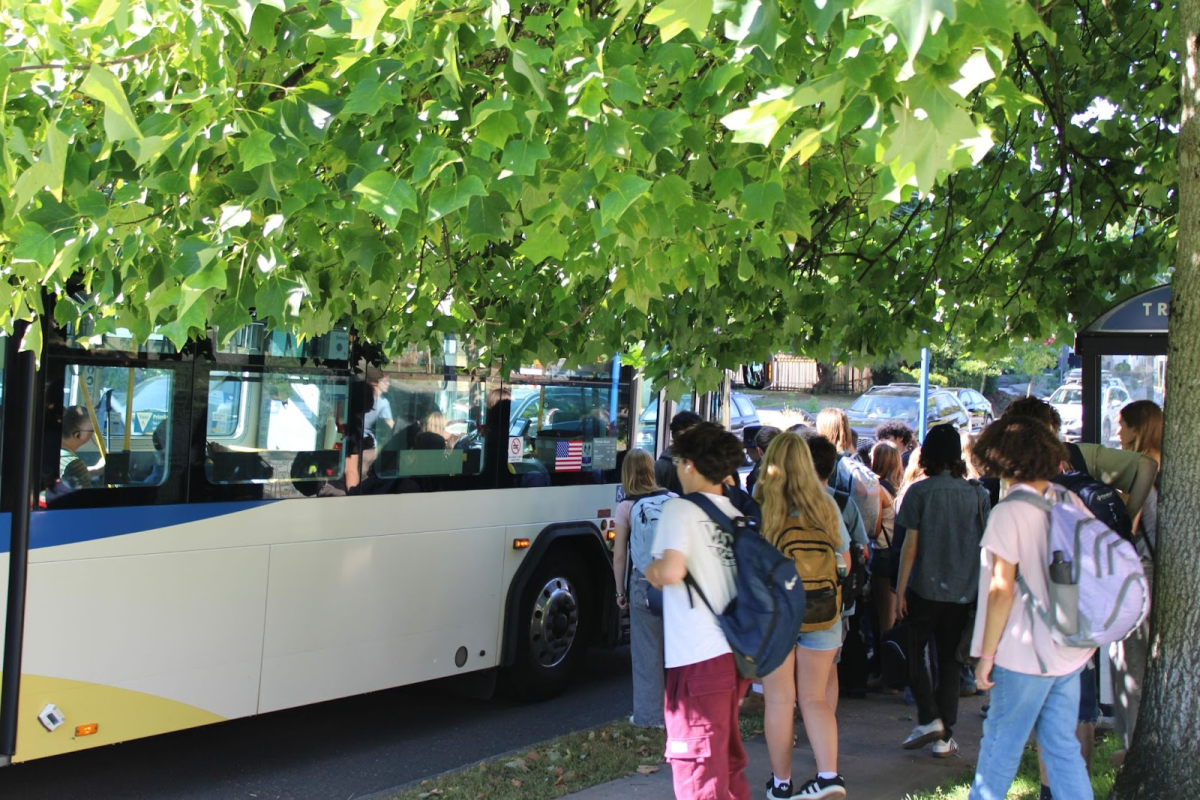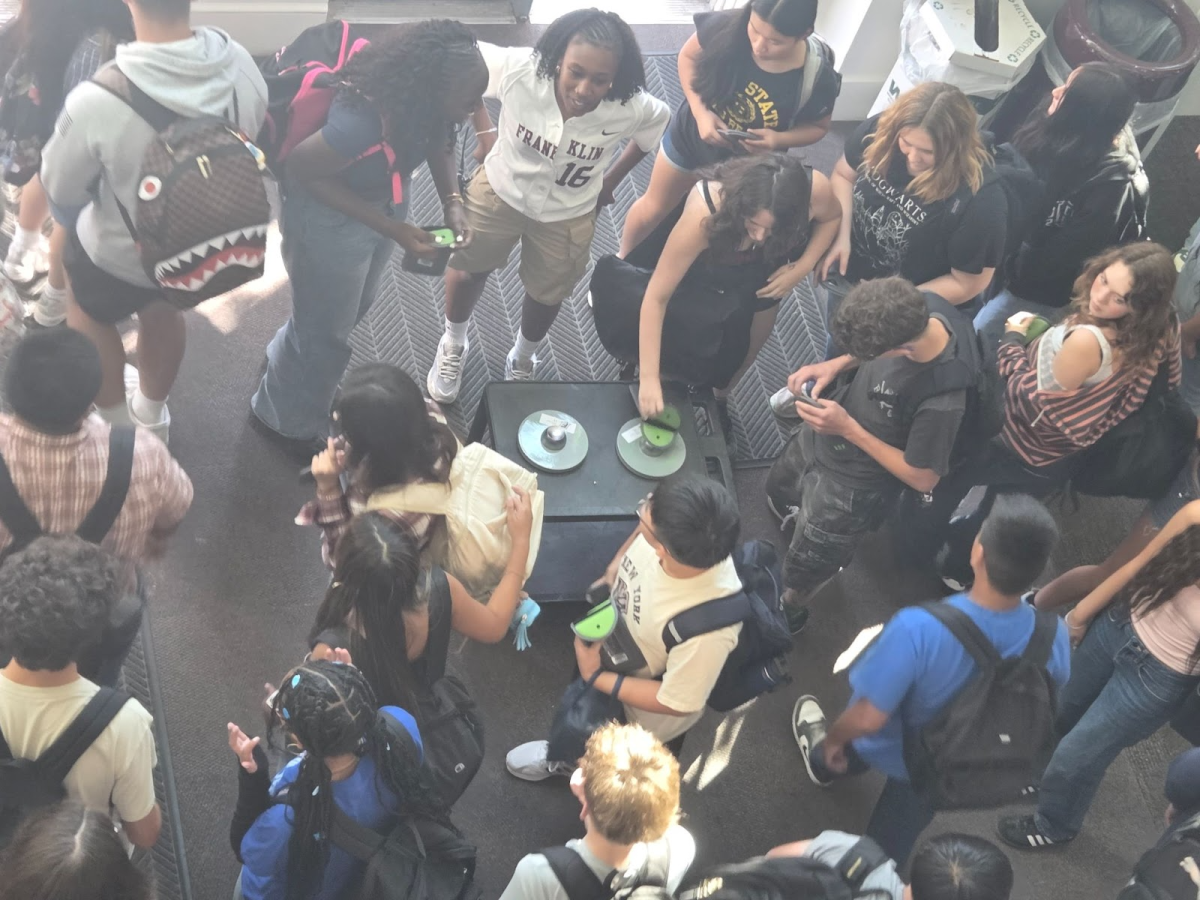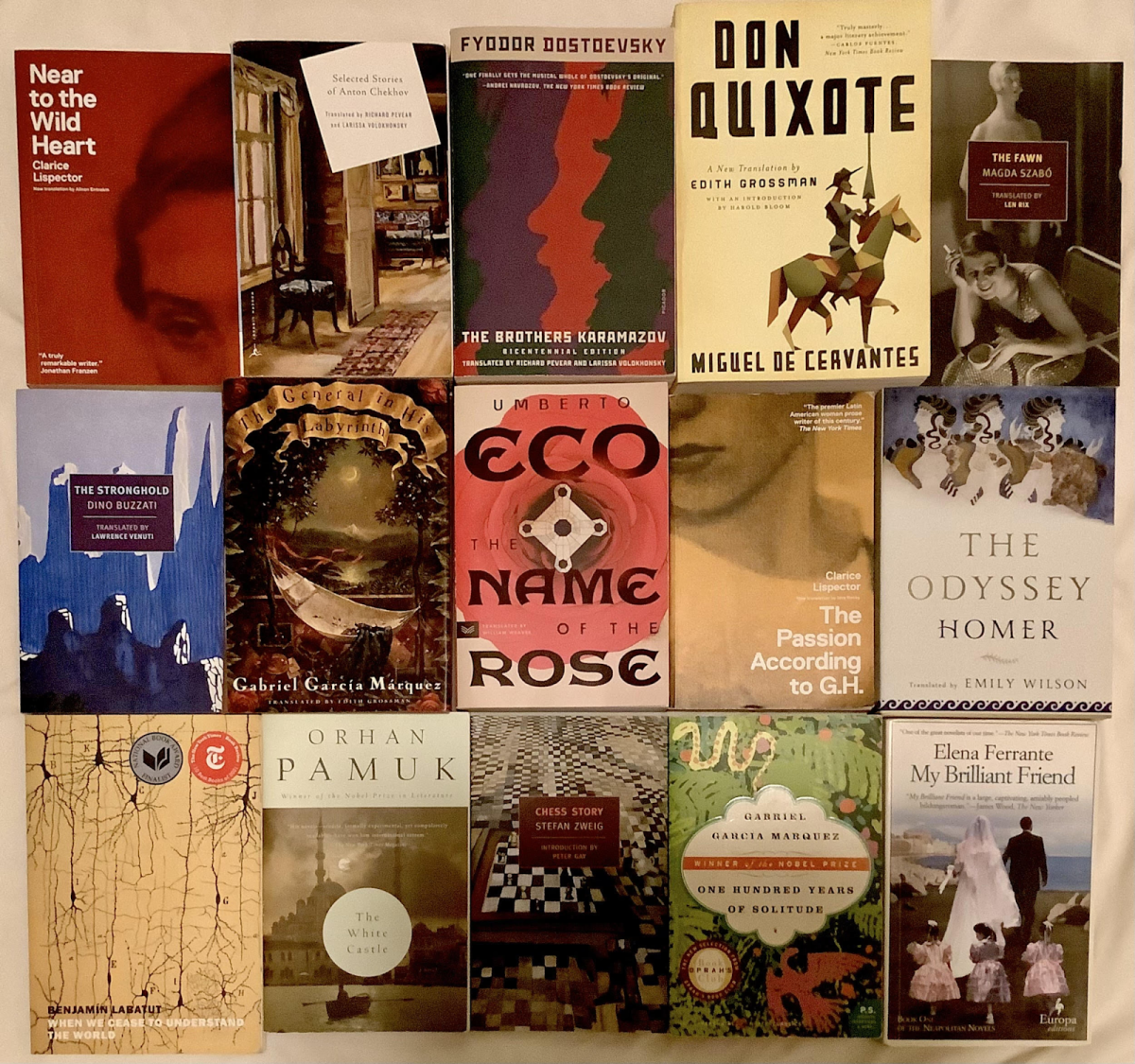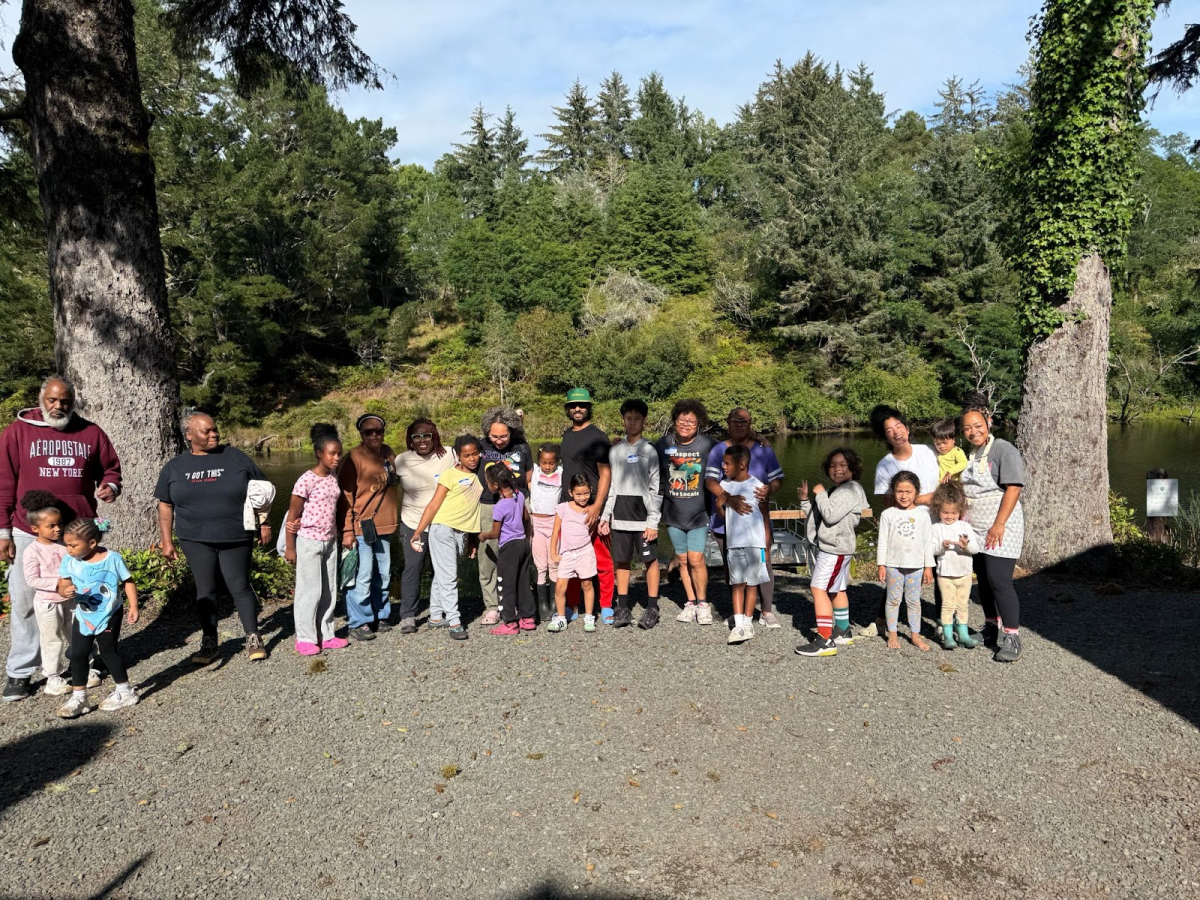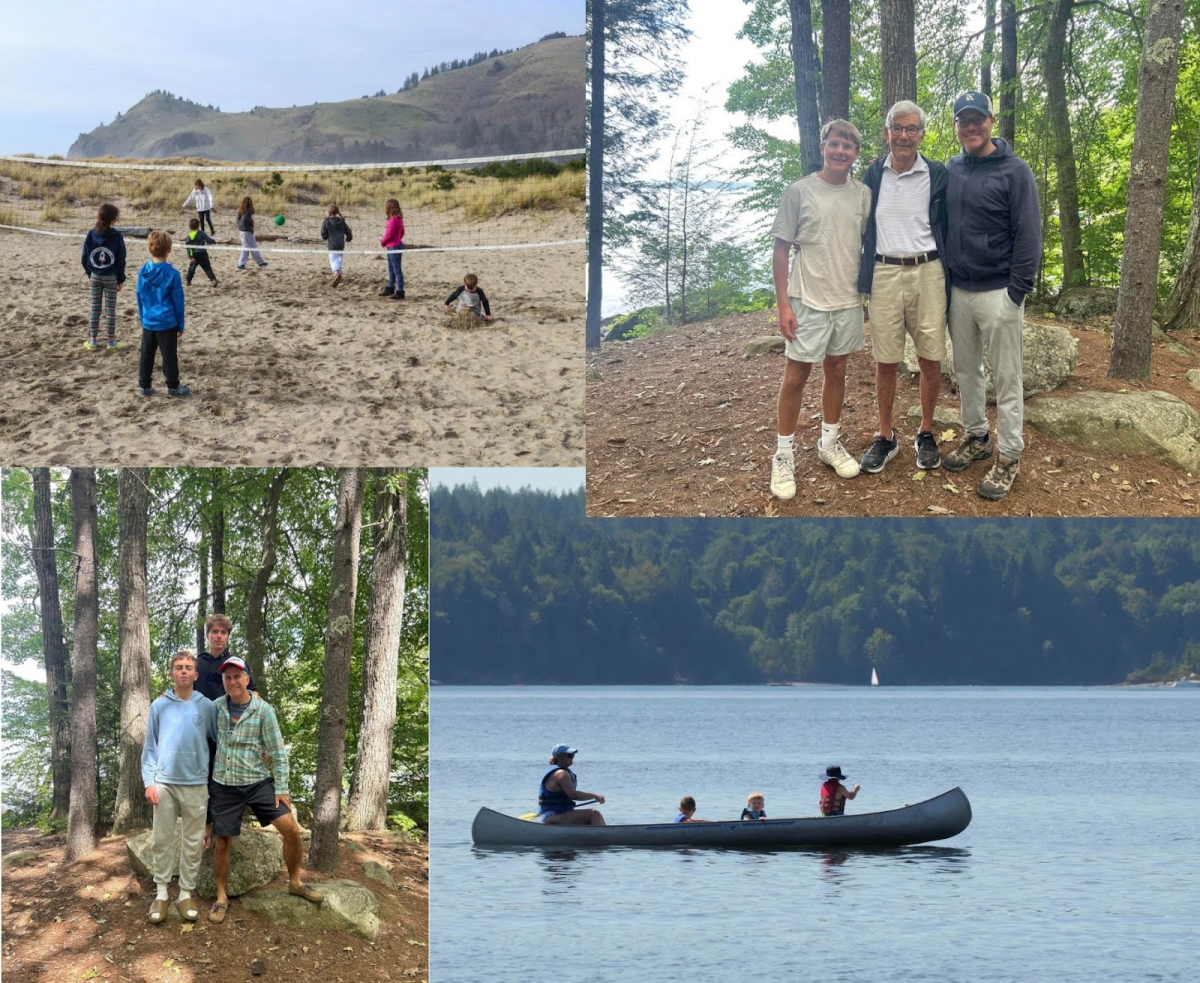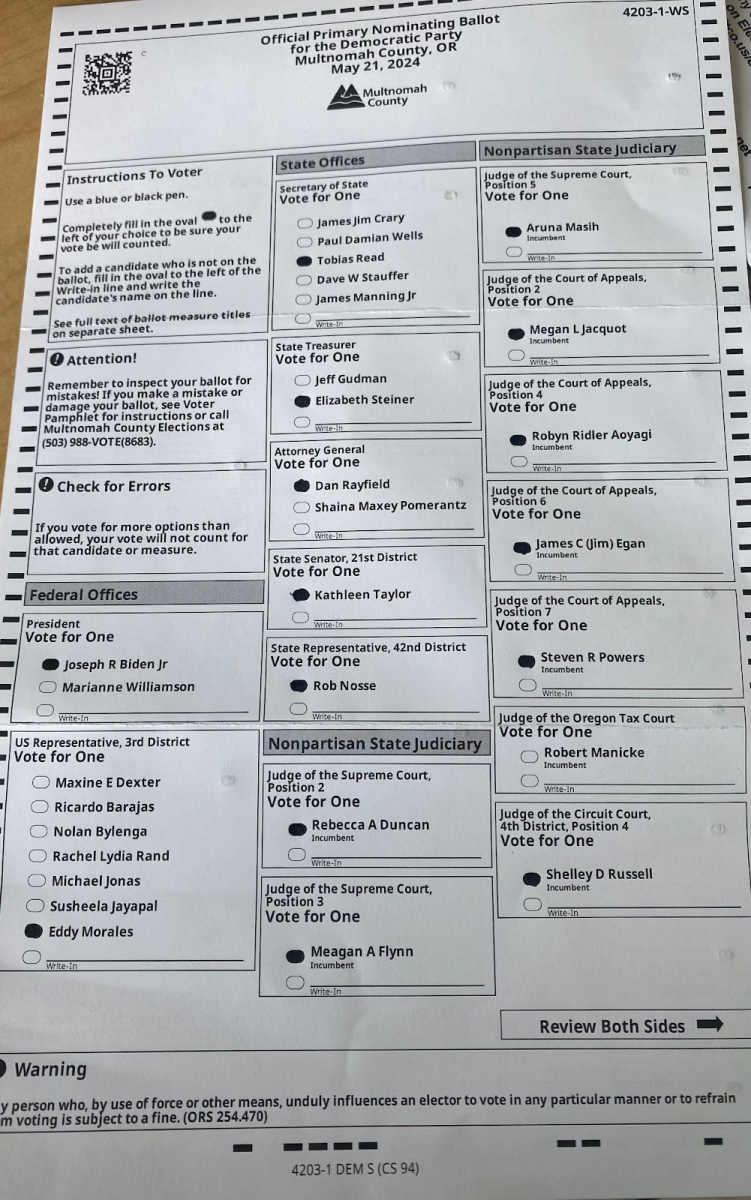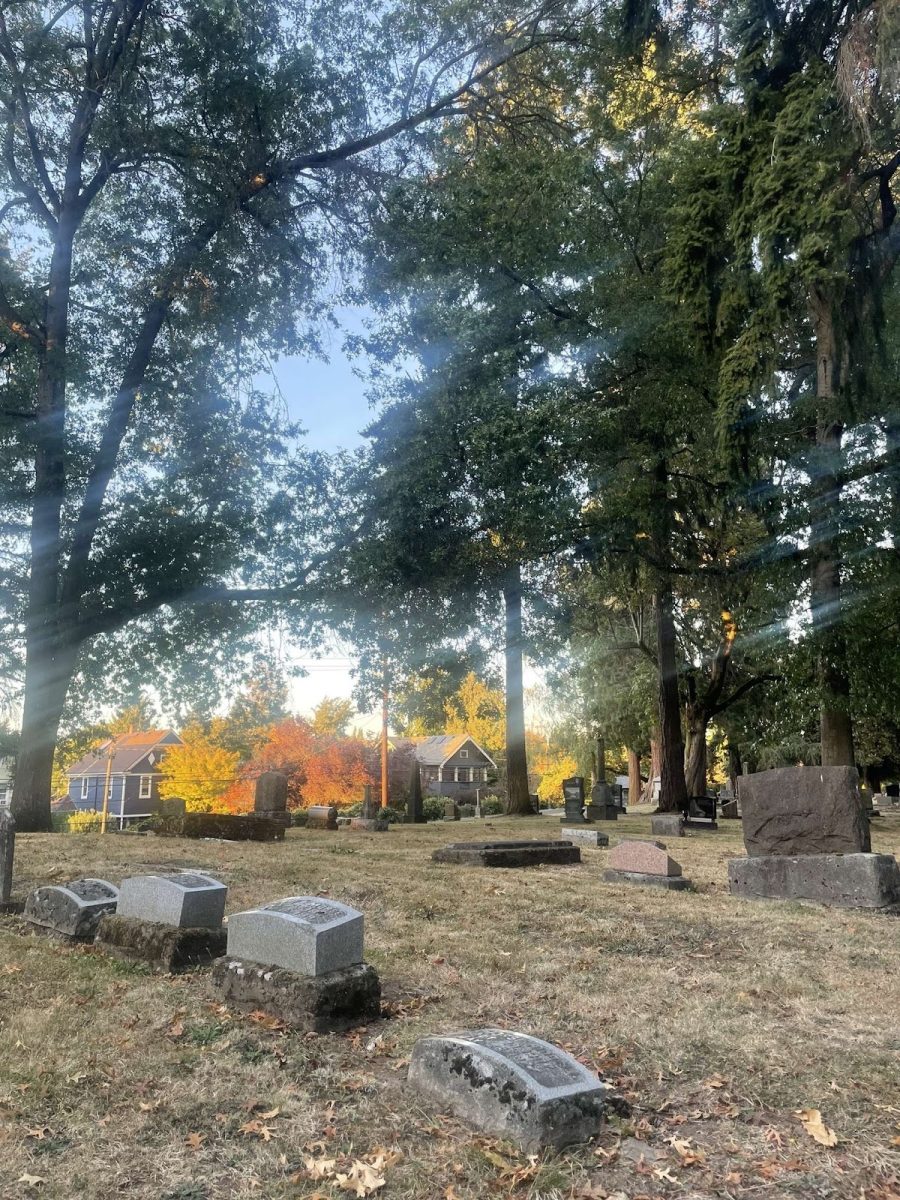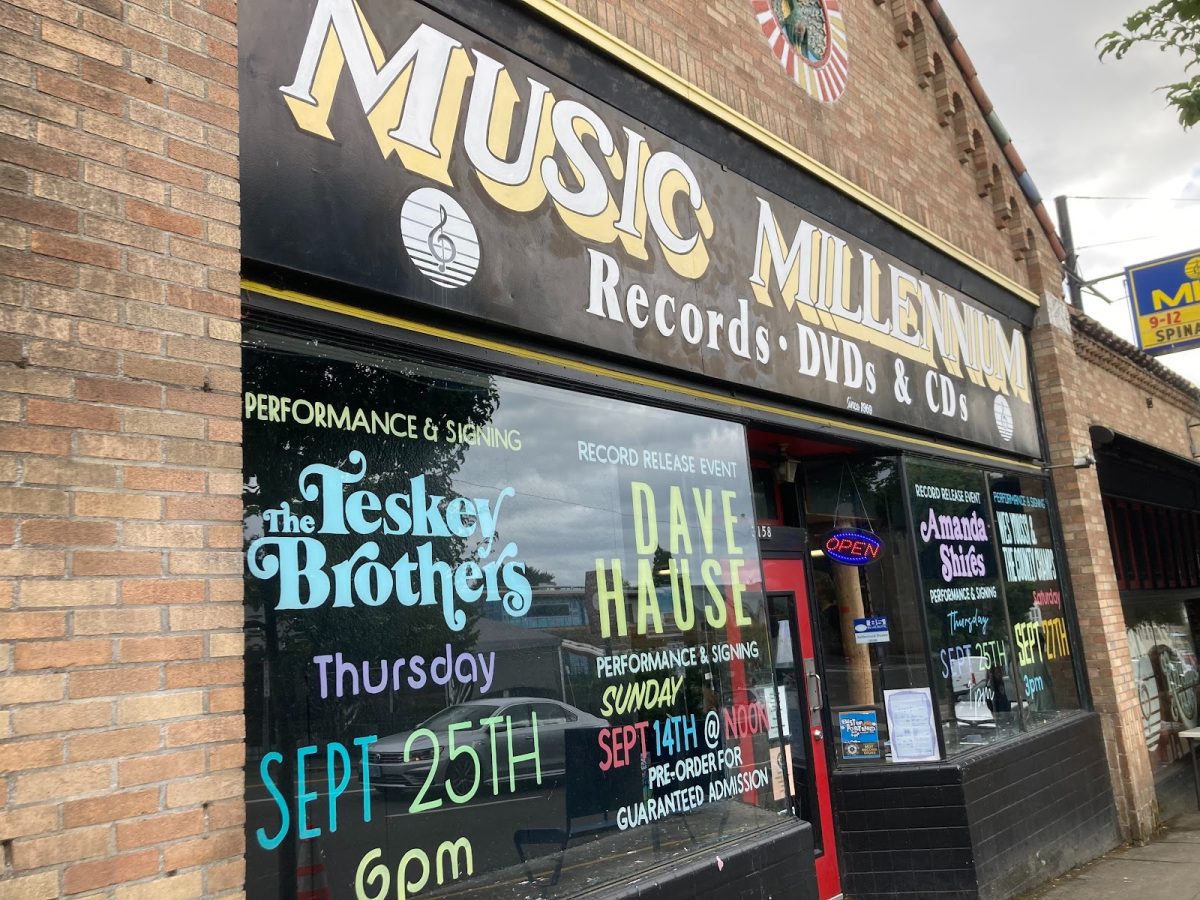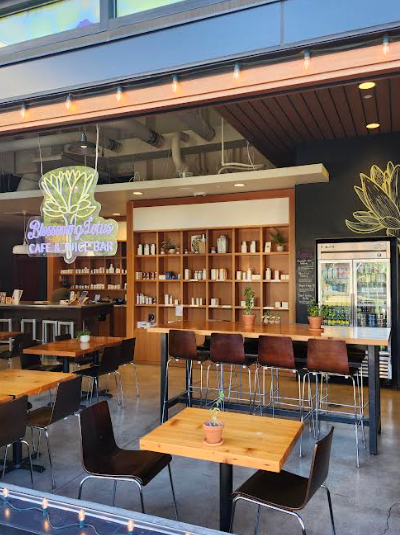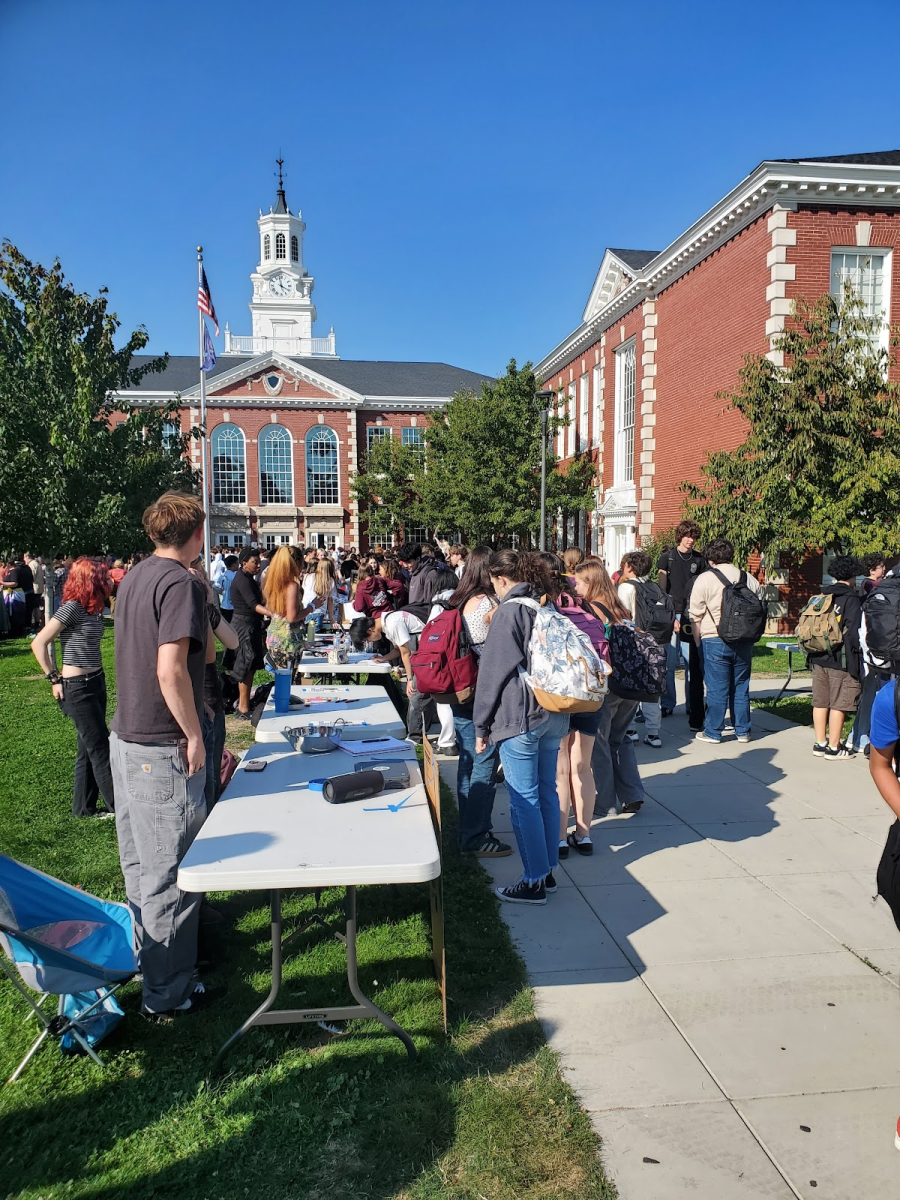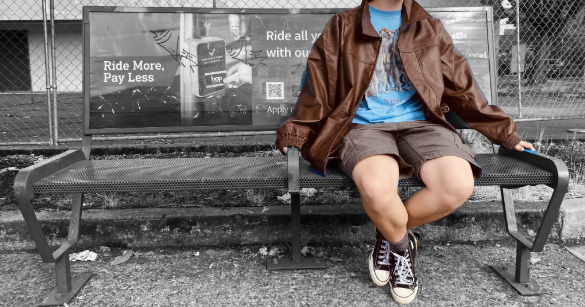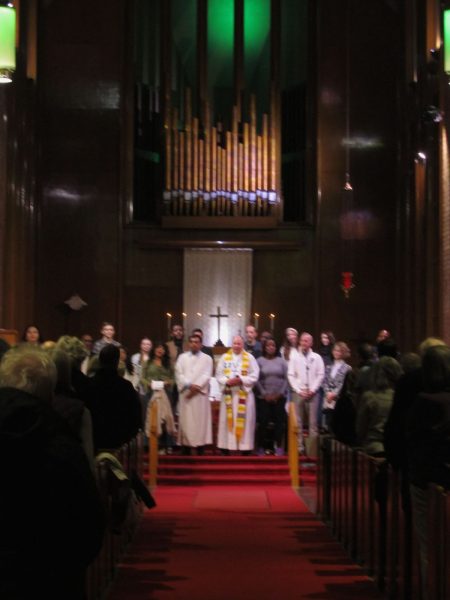
On the evening of Sunday, Feb. 16, the congregation of Augustana Lutheran Church in Northeast Portland gathered for a Sanctuary Service. The clean smell of rain was replaced by the warmth of incense as Augustana’s Reverend Dr. W. J. Mark Knutson; Mayor Keith Wilson and his wife, Katherine Wilson; immigration advocates; high school students; faith leaders; and other community members filed through the large wooden doors and gathered at the altar. The last hour of daylight filtered in through the stained glass windows lining the walls. News channels crowded into the balcony, documenting the scene below.
Augustana has long been an avowed place of sanctuary and has dedicated itself to protecting those vulnerable to federal immigration policy changes. “Safe places are essential because we have to push back,” says Knutson. “If nobody pushes back, [U.S. Immigration and Customs Enforcement (ICE)] just can roll right on through.”
On Jan. 20, 2025, former Acting Secretary for the Department of Homeland Security (DHS), Benjamine Huffman, rescinded the 2021 memorandum, “Guidelines for Enforcement Actions in or Near Protected Areas.” The memorandum expanded on over a decade’s worth of precedent regarding guidelines in protected spaces, the memorandum advised both U.S. Customs and Border Protection (CBP) and ICE to avoid enforcement action in or near protected places to the fullest extent possible, with some exceptions for dangerous situations.
Such designated protected areas included: schools, medical and healthcare facilities, places of worship or religious study, social service establishments, places where emergency response and relief are being provided, and places where children gather — like playgrounds, school bus stops, and recreation centers. “We can accomplish our enforcement mission without denying or limiting individuals’ access,” read the memorandum. “Adherence to this principle is one bedrock of our stature as public servants.”
Now, four years later, the rescission of this memorandum means that ICE is no longer officially advised to modify or restrict enforcement actions in certain environments. It is replaced by a one-page DHS directive instructing enforcement officials to use “a healthy dose of common sense.” This action adds to the unease across America surrounding immigration, altering immigrants’ feelings of safety in previously protected areas and acting in-line with the Trump administration’s messaging regarding the danger of immigrants. “The rescission of the protected areas memo ignores the foundational principle that all individuals should be able to freely and safely access essential services,” comments Tess Hellgren, director of legal advocacy at Innovation Law Lab.
Though ICE’s regulations around actions in protected places have changed, ICE officials do not have permission to access private property without a valid judicial warrant. ICE can enter public areas without permission, though they do not have the authority to stop, question, or arrest anyone. ICE detainees have the right to remain silent and the right to ask for a lawyer.
Pre-election polling from the Pew Research Center found immigration was one of the main voter issues in the 2024 election, with 61% of respondents saying that the issue was “very important.” While it was a key talking point for both parties on the campaign trail, President Donald Trump’s rhetoric tended to be harsher than that of Democratic candidate Kamala Harris. During one campaign speech in Michigan, Trump said of immigrants, “They’re not humans, they’re animals,” and continually referred to immigrants as “illegal aliens” and “criminals.” He promised voters that immigration would be a priority for his administration, and by the end of his first day in office, Trump had issued 10 executive orders and proclamations directly related to changing immigration policy.
This focus on immigration is not new for Trump. After winning the 2016 election, the Migration Policy Institute (MPI) reports that his first term saw 472 administrative changes that “dismantled and reconstructed many elements of the U.S. immigration system,” largely through executive orders. The emphasis on deportation is not unique to his administration — his predecessors George W. Bush, Barack Obama, and Joe Biden all deported millions during their presidencies. However, Trump’s rhetoric aligned with policies unique to his administration, like the “Zero Tolerance” policy which separated infants and children from their parents at the southern border.
In the 21st century, U.S. immigration policy has been increasingly divisive. “It just seems like there’s a lot less room in the center,” comments Jessica Vaughan, the director of policy studies at the Center for Immigration Studies. “Sanctuary policies, I believe, are a huge problem for the communities,” says Vaughan of states and cities that have adopted sanctuary policies that do not allow local law enforcement or public officials to cooperate with federal immigration authorities like ICE officials. Oregon is one of 11 sanctuary states in the U.S.
Vaughan believes there is a clear connection between the “problem” of sanctuary policies and the need to rescind the “Guidelines for Enforcement Action in or Near Protected Areas,” allowing enforcement officials access to previously designated sensitive areas. “If sanctuaries would just let ICE arrest criminals in the jails, ICE wouldn’t have to go out into the community at all,” says Vaughan, touching on sanctuary policies that prohibit ICE from entering local jails without a warrant. “That’s kind of the perverse effect of sanctuary policies. [They] force ICE to make arrests in the community instead of in the jails.”
She describes the effect of immigration arrests made in community spaces as being “unsettling” for everyone in the community, including immigrants. However, she suggests that immigrants who have committed crimes may use protected places to evade arrest, saying that repealing “Guidelines for Enforcement Actions in or Near Protected Areas” is going to “help ICE be able to do its job, and it’s going to give criminal aliens fewer places to hide.”
Yet protected places offer more than hiding spots for criminals. Churches, hospitals, and schools provide connection, education, and assistance. The claim that the majority of immigrants are criminals is used to push harsher or more restrictive immigration policies on account of public safety. However, some recent studies show this claim is unfounded; a 2018 study published in the journal Criminology found that “undocumented immigration does not seem to have increased violent crime.” Additionally, a study published in 2021 by the U.S. Department of Justice’s Bureau of Justice Statistics found that, while prosecutions of immigrants increased between 1990 and 2018, 86% of those immigrants had been charged with immigration offenses rather than violent ones. “Hardworking immigrants are part of our families, communities, workplaces, and places of worship, and should be safe from harassment, just like any other Oregonians,” comments Isa Peña, director of strategy at Innovation Law Lab. Knutson argues that dehumanizing and criminalizing rhetoric used to justify such immigration policy is “part of history, part of authoritarianism.”
“I’m just another human being who’s screaming for freedom. … I’m not a violent individual. I’m not the one who came to steal jobs. I’m not the one who came to do drugs or sell drugs. I’m a human being working for a better life, but especially, I want to feel that freedom that I haven’t had for years,” says Francisco Aguirre, a faith leader at Augustana who fled the violence of El Salvador when he was a teenager. Without a specific destination in mind, his objective was “to find peace, to find life.”
That peace was interrupted in 2014 when ICE agents surrounded Aguirre’s house. He called Augustana, whose staff immediately agreed to help him, and Aguirre entered the church where he would reside for the next few months. “You have to be mentally prepared to be just inside the church,” says Aguirre. “Thank God that it was just 81 days.” He spent his time preparing to go to court, organizing his defense, and being with his family any moment they could spend together.
Aguirre’s daughter, Aranza Aguirre Reyna, has “magical” memories of the time she spent with her father in that small, sparse basement room, making up stories and playing Disney princesses with her sister. “When we were inside, there was a sense of security, because we knew that there were people here that would stop at nothing to protect us,” says Reyna. However, that feeling of safety “would wear off the moment we stepped outside of these walls, because there was always that threat that this was happening, and there could be a future where I have to live with only one parent.”
During the first few of the 81 nights Aguirre spent in sanctuary at Augustana, he slept under the altar. “We knew if ICE were to breach the church, [they’d be] dragging a man down this long wedding aisle,” says Knutson. “Everybody’s got cellphones. … People would be outraged.” Knutson believes that to bring awareness to how ICE actions impact immigrant communities, “You have to use the media.”
Though the decision to repeal the “Guidelines for Enforcement Actions in or Near Protected Areas” was a swift, executive swoop, its impacts are not nearly as clear-cut. Michelle Mittlestadt, director of communications for MPI, describes the repeal as “part of the climate of fear” that some members of the Trump administration want to create. The essential removal of the status of protected places has generated uncertainty and stripped a sense of safety within immigrant communities. “We know what that fear is, and we don’t think it’s fair for any other child to have to go through that,” says Reyna.
“Safe places are necessary because fear is as powerful as anything,” says Knutson. “Maybe [the impacts of the rescission] haven’t hit Portland hard yet, but don’t think every immigrant in the city and state isn’t afraid right now.” Augustana has started closing their doors during their Spanish Language Service on Sundays. “It’s really a scary time,” says Knutson.
The rescission of “Guidelines for Enforcement Actions in or Near Protected Areas” is part of the Trump administration’s narrative that it will be tougher on immigration. “To date, this is more about messaging than reality,” says Mittlestadt, adding that MPI has not heard reports of ICE agents carrying out operations in schools, hospitals, or faith-based organizations. “Just because the Trump administration lifted the sensitive locations policy and is permitting actions at the discretion of individual ICE offices does not mean such operations will take place at all or in significant number[s],” Mittlestadt explains. “We’ll have to wait and see.”
Reyna says, “There, unfortunately, is always going to be that fear. But as a community, we’re organized and we’re ready to do whatever is possible.” As changes to federal immigration policy generate uncertainty and dread across the U.S., the message of fear is combated with a message of resistance, of hope, and of preparation. Reyna continues, “I think regardless of what happens, there is a certain unity that keeps us connected wherever we may go, and we just hope that that’s enough.”
